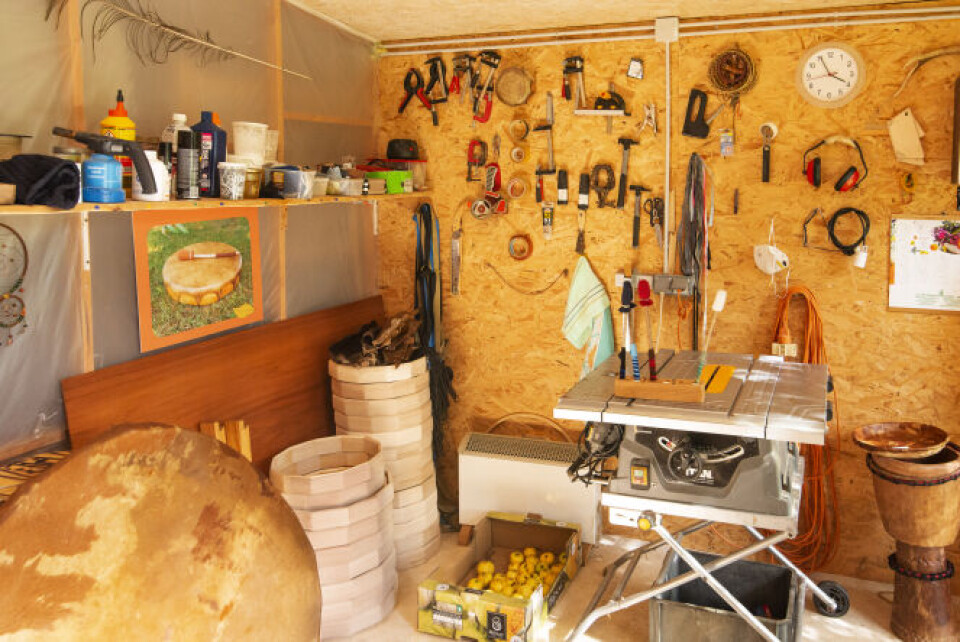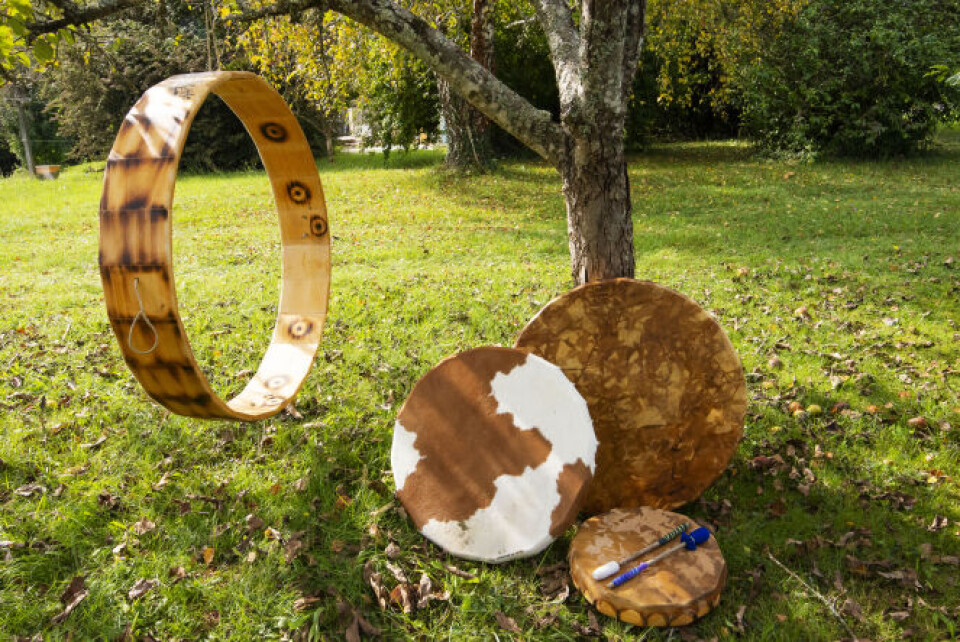-
Pete Doherty’s new song is ode to Normandy (and making Calvados)
The track is inspired by the reformed rocker’s French home
-
'Montpellier is an international city, so it should have an international opera house'
This American in France is the youngest ever music director of the Opéra Orchestre national Montpellier
-
Luthiers in Nice repair five- or six-figure violins and cellos
In a Nice workshop, two trained luthiers are busy helping musicians produce their best performances
Meet the shamanic (spiritual) drum maker in Dorodgne
Only five percussion makers exist in the entire country, according to the Institut National des Métiers d’Art, and Louisa Vinciarelli thinks she is the only one who makes her instruments from scratch

There are very few drum makers in France – and even fewer who can boast they have a hand in every stage of the process including tanning.
There is no formal training course, so although she was shown the basics by a drum maker, Ms Vinciarelli learnt most of her skills, including tanning, from the internet or by trial and error.
Her shamanic (spiritual) drums have a wonderful resonance and each one is unique, depending on the skin she uses.
Her workshop, Les Tambours de Jadhyane, is located near to the village of Saint-Amand-de- Coly, Dordogne, though she tans the skin at another, isolated site, as the smell is strong.

All her materials are local. The poplar wood to make the frames comes from a small nearby sawmill, while the cord is from a family business around 30km away.
Her skins (from bison, deer, cow, calf, goat and horse) come from farms and hunters, but she emphasises that the animals are not killed specifically for this.
Tanning the skins is the most time-consuming part of the process, taking six months. It is also physical, messy work, especially working with deer skins from hunters.
“After they have taken the meat, the hunters leave the head, hooves, organs and skins in big containers. They have given me permission to take the skins out, and so I regularly do a 100km round trip to different hunt sites,” she says.
'I always pay homage to the animals which have given me a part of themselves'
“It is heavy and unpleasant work, but at least I know the skins will get a second life. I always pay homage to the animals which have given me a part of themselves.”
The skins are salted and left for 15 days. Then they are scraped to remove the fat, before being soaked for several weeks in a mixture of water, ashes, soft soap and other secret natural ingredients.
Some skins are folded, tied, and soaked with twigs from common dogwood to achieve a sort of tie-dye effect.
“When it smells really bad, the skins are ready,” Ms Vinciarelli says. “I then have to scrape them again to get rid of most, but not always all, of the fur. Each one is different, depending on the type and age of animal, whether the skin is from the back or the front, and the life the animal has lived.”
After the skins have dried, they are cut and stretched over the poplar drum frames.
These are made by cutting planks into sections, which are then glued into a circle. They range from 25cm to a metre in diameter. The wood is sanded, polished and oiled, and some are decorated with intricate black designs.
The skins are pulled taut over this frame using cord which is passed through holes punched into the edge of the skin at regular intervals around the edge.
An intricate form of plaiting pulls it all together to two wooden bars in a cross in the middle. This is used as the handle. The cords are arranged so that they can be tightened or loosened to alter the sound of the drum.
Each drum takes around two days to make, once the skin is prepared, and Ms Vinciarelli produces 50 to 80 a year.
“There is now a real demand. When I started my business, I spent a lot of time going to fairs and running drum-making courses, which helped get myself known. Now this type of drum is in fashion.”
Her drums are not played by musicians, but used for spiritual purposes. Rhythmic drumming can help achieve a trance-like state.

Ms Vinciarelli says it was a shaman in Canada who inspired her business, by suggesting she take a small drum back home to France with her.
“This I did, not really thinking it could change my life,” says Ms Vinciarelli, whose previous career was training people to become warehouse managers. “As I drummed more and more, I started having visions of animals and could sometimes predict future events. I decided to make my own drum 10 years ago, and began my business in 2015.”
Her clients are those interested in shamanism, but also music therapists, hypnotherapists, psychologists and psychiatrists, who she says are seeing benefits for clients similar to meditation and hypnosis.
The drums cost from €330, the price reflecting the time and work that goes into making each one.
She says when clients come to buy their instrument, it is always the drum that chooses them, not the other way round.
Related stories
‘I am still captivated by the magic of my stained glass windows work’
Artisan soap maker: 'After six years, it still gives me a thrill’
























